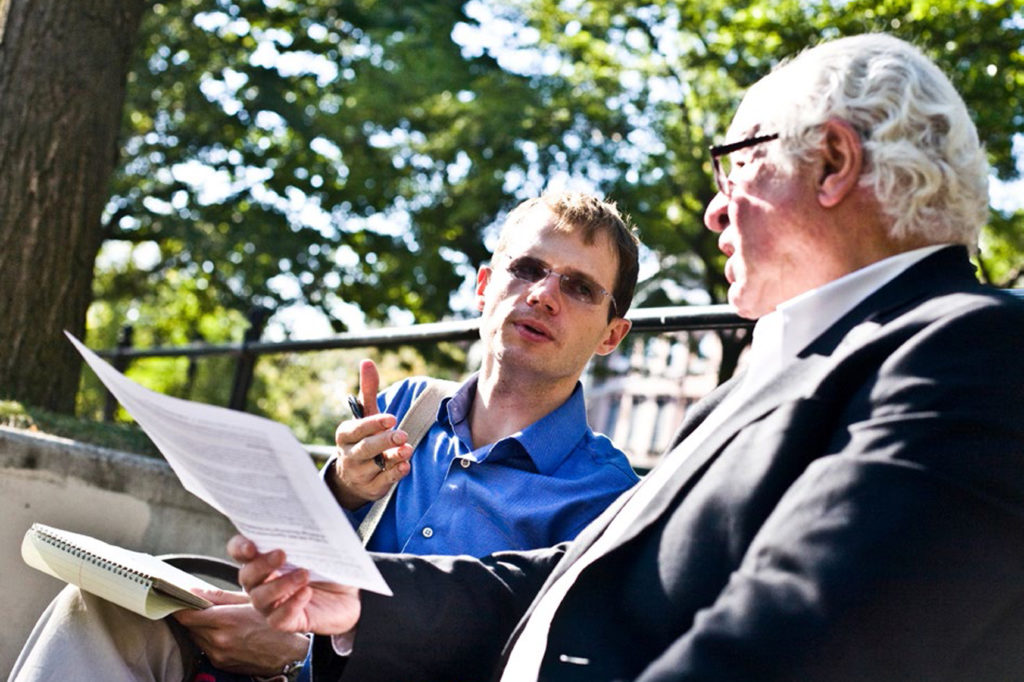
I have a decade of experience working with sensitive sources for news stories at ProPublica, Reuters and The Wall Street Journal. If you have a newstip, a document, or even just a story idea that you want to share, I would love to hear from you – especially if it’s a story that will help hold the powerful to account.
Below are some ways to get in touch. Pick the one that works best for you:
- Encrypted Email: Send an email to my ProtonMail account. It’s encrypted and I check my inbox regularly for newstips and story ideas: me@cezarypodkul.com
- Encrypted Messaging: You can also find me on Keybase (username: cezary4) and send an encrypted message there using my PGP key: B78FB060E6872E18
- Chat: I am also reachable on Signal, the secure messaging app, on 475-323-8756. Or you can find me on Wire at: @cezaryp. Or Keybase (cezary4) or Telegram (cezarypl).
- SecureDrop: For more sensitive matters, I’d suggest sending a tip via ProPublica’s SecureDrop. It’s the most secure and anonymous way to share information and files with a news organization.
I vet every tip I receive; if you take the time and effort to write to me, I will take the time and effort to review the information you provide. If I can’t work on the story, I’ll be sure to let you know so you don’t waste my time, and might suggest another reporter or news outlet that you could try. Here’s some helpful information to include with your tip:
- What is the wrongdoing or harm that you’re looking to expose? Be as specific and succinct as you can.
- What is the larger context that I should know to properly understand the importance of the information you’re providing?
- What is your basis for knowing what you say you know? Is it a suspicion, an educated guess, or do you have direct knowledge?
- Do you have documents or other evidence that you could provide, or know of other sources that might corroborate your account?
Here’s a quick example of how this all works in real life.
In June 2015, I received a cryptic email about New York City property tax breaks tied to rent limits on apartment buildings. The sender claimed that many property owners were willfully ignoring the rent limits while pocketing the tax breaks tied to the restrictions. It would have been easy enough to ignore the confusing email, but instead I dug into the newstip and contacted the sender. He turned out to be a veteran analyst in the city’s housing department who had tried but failed repeatedly to convince his higher-ups to do something about the problem. The newstip turned into “The Rent Racket,” a nearly two year-long reporting project which spurred legislative change in Albany and prompted the city and state to strengthen enforcement of rules tied to the tax breaks.
The official who sparked the reporting, Stephen Werner, later testified at a New York City Council hearing about his his concerns, which caught the attention of a lawmaker who called Werner a “hero” and successfully sponsored legislation to address some of the issues he had uncovered. Hear what the two of them had to say in conversation with each other during this podcast I recorded with Werner:
Protecting Sources
Sometimes, whistleblowers want to go public and speak on the record; at other times, doing so is too risky and they ask to remain anonymous. That decision is theirs and theirs alone. Protecting sources is a sacred obligation. Below are some general principles I try to abide by when working with whistleblowers, as I’ve done before on this and other stories. They’re known as the “Perugia Principles for Journalists Working With Whistleblowers in the Digital Age,” which are compiled and explained in more detail in this handy guide from Blueprint for Free Speech:
- First, protect your sources. Defend anonymity when it is requested
- Provide safe ways for sources to make a first contact with you, where possible
- Recognize the costs of whistleblowing for the whistleblower, and prompt them to think through ahead of time how to cope when the story breaks
- Verify material focusing on the public interest value of the information, not on your view of the attitudes or opinions of the source or whistleblower
- Take responsibility for your digital defense and use encryption. Even though encryption may not completely defend your source, it offers important first-line protection
- Determine the biggest threats to you and your source, and what specific steps you need to take to protect both of you
- Explain the risks of digital exposure to your source or whistleblower. On sensitive stories, train your whistleblowers in basic digital security
- Publish original documents and datasets in their entirety where possible and safe to do so, recognizing the importance of datasets in stories
- Securely delete data provided by sources, when asked, to protect confidential sources, consistent with ethical, legal and employer obligations
- Ensure any digital drop boxes for confidential sources and whistleblowers offer a good level of security, and, for higher-risk materials, anonymity
- Understand the country, regional and international legal and regulatory frameworks for protecting confidential sources and whistleblowers
- Encourage news publishers to practice their responsibility to provide proper data security for journalists, sources and stored materials, along with appropriate training and policies to guide journalists